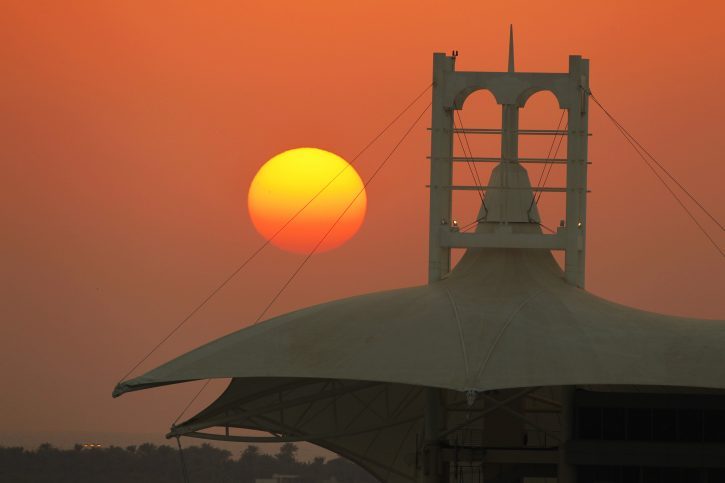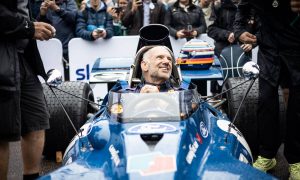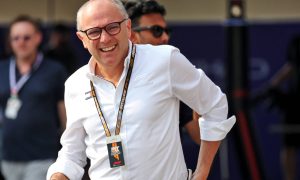
The Bahrain International Circuit will host its 13th Formula 1 race next weekend when the light go green at Sakhir next weekend.
It all started back in 2004 when Bernie Ecclestone brought Grand Prix racing to the tiny Gulf state, the first Middle East country to host an F1 race.
Here are six must-know facts about the venue and thee event ahead of this weekend's race.
Only 1 corner has a name

©WRI2
Classic Grand Prix circuits are full of named corners, often inspired by famous drivers, by the Herman Tilke-designed circuit simply assigned numbers to each turn, except for the first one.
In 2014, the Turn 1 hairpin located just after the start was named in honour of seven-time world champion Michael Schumacher, the first man to win in Bahrain in 2004.
A track surrounded by sticky-sand!

Basking in the desert, Bahrain is surrounded by miles and miles of sand, which throws a few spanners in the works of a dedicated F1 track.
Strong Persian Gulf winds can kick up the sand and spread it all over the place, an unwelcome presence for car, driver and Pirelli's high-grip tyres.
In 2009, a sandstorm actually force the circuit to put pre-season testing at Sakhir on hold.
In a bid to minimize the issue, race organisers spray the surrounding desert - miles away - with adhesive to stick the recalcitrant grains together!
The track is lit by 4,500 floodlights

Bahrain switched to night-race status in 2014, becoming only the third Grand Prix venue to host a floodlit race, along with Singapore and Abu Dhabi.
The switch implied a heavy infrastructure upgrade obviously, estimated to have cost €13 million as 4,500 individual light fittings were mounted on 495 poles, all linked together by 500 kilometers of cable!
Gleaming under the beaming light, F1 cars always look better at night.
Still a controversial venue

For political and human rights reasons, the Bahrain Grand Prix is still taken hostage on a regular basis, with government opposition factions and civil rights activists calling on F1 to cancel its event in a sign of protest.
The race was actually canceled in 2011 following a period of unrest which took hold of the tiny kingdom. No disruption of a race weekend has ever occured in Bahrain however.
A surface made in the UK

The Bahrain circuit track surface is made of greywacke aggregate which was shipped to the Gulf state from Shropshire in the United Kingdom.
Greywacke is a variety of sandstone generally characterized by its hardness and dark color. When blended to F1's stringent specifications, it offers exceptional levels of grip.
This surface is also used at the Yas Marina Circuit, which hosts the Abu Dhabi Grand Prix.
No champagne on the podium

The kingdom of Bahrain does not permit the drinking of alcohol in public, or the display of advertising of alcoholic beverages.
Williams will obviously alter its Martini livery to comply with the local law, and Force India won't be racing with any Johnnie Walker branding.
On the podium, drivers are given a rose water drink to spray, something known as Waard.
Rose water blended with a bit of HYPE Energy drink brings us right back to Force India! Could Sergio Perez or Esteban Ocon pull off a win in Bahrain? Anything's possible when you're racing in pink...
GALLERY: F1 drivers' wives and girlfriends
Keep up to date with all the F1 news via Facebook and Twitter








